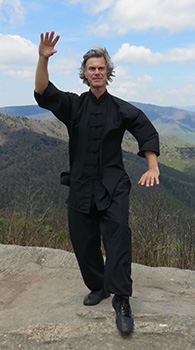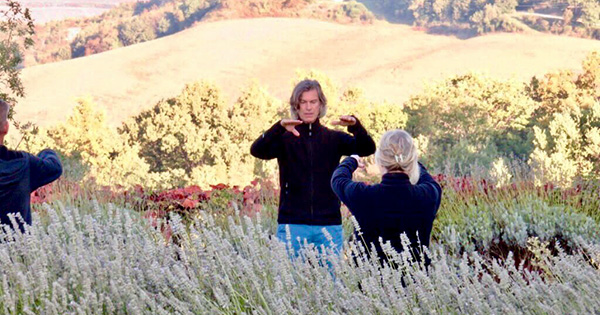Opening
As someone who has been playing Taijiquan (Tai Chi) for almost 30 years and teaching for more than 20, I have a special place in my heart for students who are new to the practice. While many new students fall in love—like I did—with Tai Chi after their first class, a significant number of new students encounter confusion, frustration, and a disconnection between what they expected from their first class and what they experienced. Unrealistic expectations are sometimes fostered by media images of Tai Chi masters, observations of advanced students and the instructor, and underestimating the time necessary to develop the ability to move in a refined way.
 Although newcomers to the art may not immediately experience the flow and benefits of Tai Chi, the consistent practice of Tai Chi over time can result in significant positive changes. Improved physical balance, a reduction in stress and pain, strengthened joints, enhanced body awareness, the ability to attain deep states of physical relaxation and mental calmness, increased concentration, and emotional ease are a few of the benefits. Those results, of course, come after a period of serious dedication to the art.
Although newcomers to the art may not immediately experience the flow and benefits of Tai Chi, the consistent practice of Tai Chi over time can result in significant positive changes. Improved physical balance, a reduction in stress and pain, strengthened joints, enhanced body awareness, the ability to attain deep states of physical relaxation and mental calmness, increased concentration, and emotional ease are a few of the benefits. Those results, of course, come after a period of serious dedication to the art.
Many new students are understandably eager to reap the benefits of Tai Chi practice. Some become discouraged when their quest for a gentle flowing movement practice meets the reality of their physical and mental habits in a detail-oriented class that is more “stop-and-go” than “move-and-flow”. With respect for Tai Chi beginners and the dedicated individuals who instruct them, the following article offers some guidelines to support and encourage motivation for the successful and enjoyable practice and teaching of the art.
1. Remember that you’re creating a Tai Chi community. An instructor with a high percentage of students who keep returning to class week-after-week is likely to be someone who does a good job at establishing a supportive, friendly community where the learning process is enjoyable as well as being informative.
Welcome students into your class with a few words of encouragement, and also introduce them to the other students in your class. When possible, have students interact with one another by way of introductions and non-competitive two-person exercises such as push hands. Do what you can to support a sense of community.
The social connections that are formed between your students can create a bond that strengthens the cohesion and motivation of the class. You may wish to begin the class with a group circle that provides a space where new students can introduce themselves by name and tell others about their intention for studying Tai Chi. When students already know one another, taking a few moments to share their community activities with the class can further deepen connections. Additionally, you can begin your class with an easy group movement practice consisting of activities such as stretches, simple Tai Chi movements accessible to beginners, and/or a few easy Qigong postures. After the initial group interaction, consider switching to a silent practice period to reinforce the meditative quality of Tai Chi.
If it’s appropriate, encourage and guide senior students to assist novice students. That’s a wonderful way to support the learning of everyone while building a friendly peer support system.
End your class with a group circle, perhaps concluding with a few easy Qigong movements, gentle stretches, or several mindful breaths. Offer words of praise for your students’ work and commitment. Encourage at-home practice, share useful resources such as videos that align with your teaching style, and let your students know that you look forward to seeing them again at the next class.
2. Emphasize praise over precision, and encouragement over criticism. Your students—especially if they’re beginners—are more likely to stay motivated when hearing more positive words of encouragement than negative criticism. Instructors are reminded to provide much more positive reinforcement than “correction”. If you’re inclined to offer a critique of your student (which can be necessary if a stance or posture is jeopardizing their safety or joint health), try to balance negative comments with much more praise. I recommend at least 5 positive comments (a non-verbal smile or an affirming nod also qualifies as a comment) to 1 corrective comment, and ideally much more than 5.
3. Focus more on the fundamental principles of Tai Chi instead of the small details. For the beginner, gentle guidance about the importance of an upright spine, relaxed body, calm breath, and moving from the center (lower dantian) are more important than advanced teachings about synchronization of the mind, body, and breath. Speaking of the mind, I find it useful to remind beginning students that Tai Chi is a mind-body practice. Therefore, training the mind to be patient, calm, and attentive is an important part of the practice. Even when the outer physical elements of the practice are complex, the student can practice meeting those complexities with inner calmness and patience, which is an expression of the spirit of Tai Chi.
4. Normalize confusion and impatience. Many beginning Tai Chi students feel lost, confused, and discouraged when, for example, they discover that they have extended the opposite arm in a posture or have taken a step with the wrong leg. Letting your new students know that confusion and directional disorientation can be a “normal” part of their learning process can help to relieve unnecessary concerns and negative self-judgments. To support the motivation of my new students, I routinely advise them to keep their learning curve “simple” by taking away just “one thing” (e.g., a posture or tai chi principle) that they can practice in between classes. I also provide a description of the classroom as being a “perfection-free zone”. Light-hearted jokes and comments such as, “extend your other left arm” or “I saw how you quickly adjusted your posture before the teacher said anything” can encourage a buoyant attitude throughout the class, as long as comments and jokes are supportive and not demeaning.

Leave a Reply